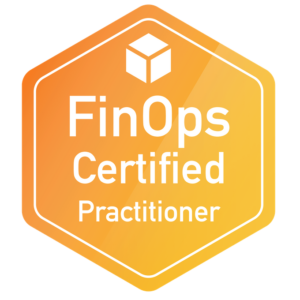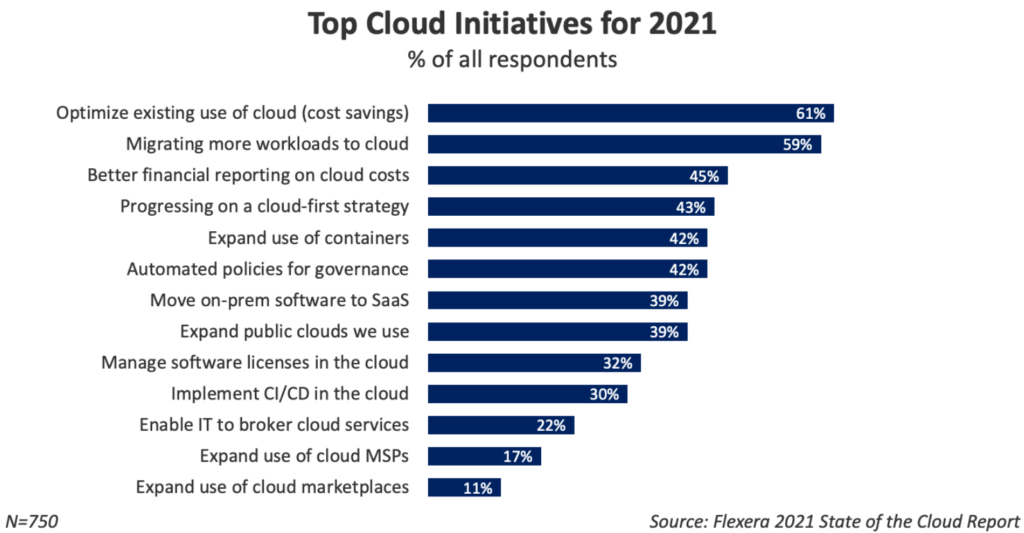
“Revenue is a team sport.” – Peter Newton
One of my favorite quotes from one of my favorite mentors. And pithy wisdom for anyone looking to stand out in their tribe.
In consulting (and so many other businesses), revenue generation is the continuous reward of a cycle that converts demand into money, money into results, and results into demand. The more collaboration that occurs in this cycle between sales, marketing, and delivery, the more virtuous it has the potential to become. Everyone can and should influence revenue. Simply put – it’s a team sport.
You’re probably wondering what Peter Newton and revenue have to do with a FinOps certification. Stay with me.
I’ve been obsessed with FinOps ever since I assumed the unofficial role of “GCP cloud billing, cost management, and cost optimization czar” at Taos.
In the beginning, it was novel – “oh, another ‘-Ops’ movement!”; I quipped to J.R. Storment in my first meeting with him that he should buy finopsmanifesto.org before I did (because every movement needs a manifesto → Agile → DataOps). Jokes aside, the concept of FinOps was fascinating to me, and I genuinely wanted to get ahead of the curve on it. I bought the book, started reading, and haven’t regretted the decision to invest time in learning more about it.
I have yet to meet a customer that isn’t interesting in talking about how to do better with their cloud spend – have you?
If you’re new to FinOps, but understand cloud → TL;DR:
– Cloud spend = resource usage x resource rate.
– To optimize spend, either reduce the usage or reduce the rate.
– Usage reduction is more effective as a distributed responsibility.
– Rate reduction is more effective in a centralized role.
– Everyone should feel accountable for their cloud spend.
Here’s a basic example to demonstrate the idea:
– The cost of a server in the cloud = how long you use its resources (vCPU, memory, disk) x how much those resources cost. Note that if the server is powered on, it’s considered “in use” – this is how the cloud works.
– To optimize how much you pay for the server, you can either use it less (by powering it off when it’s not needed) or acquire a discount.
– The individual or team that owns the server is in the best position to know when that server could be powered off.
– Pricing discounts are more beneficial when used in bulk across many servers.
– Powering a server in the cloud on or off literally results in money being spent or not, and everyone should feel empowered to use resources wisely.
FinOps isn’t my primary job responsibility, so the certification sat on the back burner until this summer. But in between then and now, I figured out how to self-host WordPress on Google Cloud for pennies a month, which was inspired by FinOps principles.
I took the exam last week, and am pleased to report that I passed. The test is based on the framework, the book, and the corresponding training. I don’t have additional advice to offer other than to go deep into the official subject matter, because answering 50 questions in 60 minutes doesn’t leave much slack to stop and think.
An objective that I bring into preparation for any cloud-related certification is to exit with an improved practical understanding of how to apply the concepts in my work with Google Cloud customers. The resources below aren’t directly related to the exam, but provide a good summary of where the FinOps framework intersects with the current capabilities of GCP. This is essential knowledge for a FinOps practitioner in the ecosystem.
Products and Services
– Cloud Billing Concepts
– Labels
– Pricing Calculator
– Free Tier
– Sustained Use Discounts
– Committed Use Discounts
– Quotas
– Active Assist
– Preemptible VMs
– Cost Management Tools
White Papers
– Getting Started With FinOps on GCP
– Maximize Business Value With Cloud FinOps
– A Guide to Financial Governance in the Cloud
– Understanding the Principles of Cost Optimization
– Building a Cloud Center of Excellence
– Unit Costing: The Next Frontier in Cloud FinOps
Best Practices
– Cloud Architecture Center: Cost Optimization
– Cloud Architecture Center: Cost Optimization on Google Cloud for Developers and Operators
– Cloud Architecture Center: Adopt and Implement FinOps
– Cloud Blog: Cost Management Posts
Cost Management and Optimization Platforms
– Google Cloud Billing Reports
– Google PSO Cost Optimization Dashboard
– Ternary is a third-party platform, but built exclusively for Google Cloud with FinOps principles in mind.
– Cloudability is the industry leader, especially when multi-cloud is a requirement.
I also highly recommend this Apptio course on Cloud Financial Management and this Gartner report on How to Manage and Optimize Costs of Public Cloud IaaS and PaaS. They provide additional perspectives on the subject.
So what does this have to with Peter Newton and revenue? Stay with me a little longer.
The impetus for FinOps is a shift in the financial treatment of data center expenditures from CapEx to OpEx. IT folks that haven’t been exposed to the finances might not be able to fully appreciate this.
Here’s an extension of the basic server example to explain:
– Back in the pre-cloud data center, finance approved the purchase of a new server for IT every 5 years.
– For both finance and IT, there was predictability. Finance knew the cost, IT knew the available capacity. Change would require a budget conversation and approval. Checks and balances.
– In the current era of cloud, virtually any engineer has the ability to create (or request) a server in the cloud on-demand, where there’s virtually unlimited capacity waiting.
– Finance generally isn’t in the approval chain due to how decentralized (and in many cases automated) the creation process is. But they still get the bill at the end of the month. What are the opposite of checks and balances?
The paradigm is shifting. In an environment where unlimited capacity is available and purchasing power is democratized, disciplined spending needs to be encouraged and rewarded at every level of the organization. An operating model update is required.
The FinOps framework proposes that efficiency is the objective. And the efficiency of cloud spend can be continuously improved through a cycle that provides insights, derives optimizations from those insights, and operationalizes the act of optimizing. The more collaboration that occurs in this cycle between engineering, finance, and leadership, the more virtuous it has the potential to become. Everyone can and should influence cloud spend.
Simply put – “Efficient cloud spend is a team sport” – and FinOps offers the playbook!
Much like revenue, FinOps is best approached as a collective issue. No silos. No ivory towers. Thanks for the unintentional analogy Peter!
While I no longer wear the crown at Taos, my consulting gig at EPAM puts me in a seat where I get to observe and influence cloud spend on the ground in customer organizations. I can’t share specifics, but I’ll say this – it’s a complex problem that cuts across people, process, and technology in a very similar manner as DevOps. And I believe that FinOps will be one of the most important trends in enterprise cloud adoption over the next decade.
For the fifth year in a row, Flexera’s State of the Cloud Report shows that cost savings is the overall top initiative, with better financial reporting being the third priority. Incidentally, migrating more workloads to the cloud is in second – which will amplify the need for these two initiatives!

In nearly every dimension that Flexera slices their data, cost efficiency, cost avoidance, and cost optimization permeate the responses. FinOps-aware professionals will be well-positioned to thrive in an environment where cost is an equal concern to performance and quality.
Get started today → finops.org